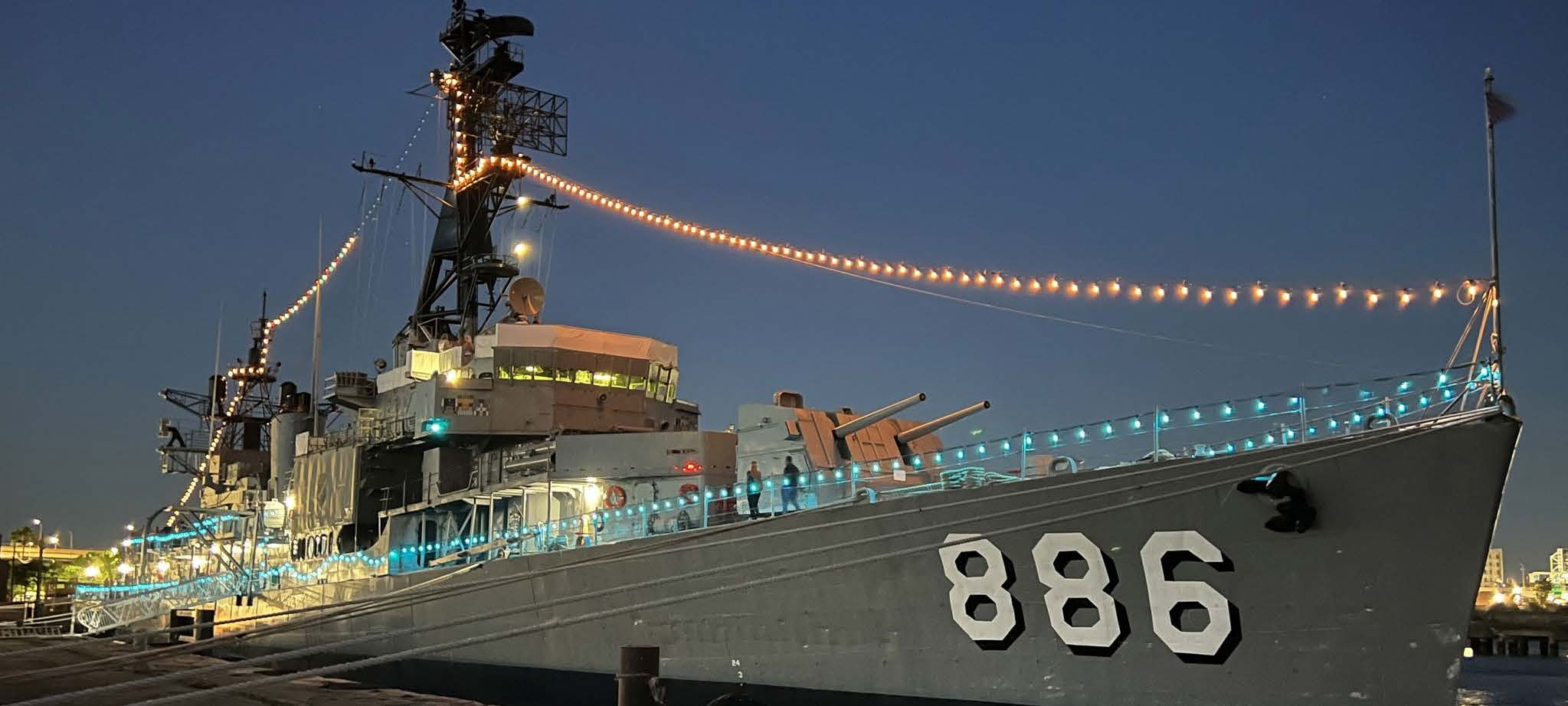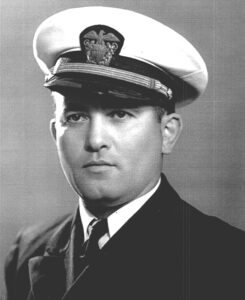USS Orleck DD-886

The USS Orleck (DD-886) is a Gearing-class destroyer that served in the United States Navy from 1945 to 1982. Named after Lieutenant Joseph Orleck, who was posthumously awarded the Navy Cross for his actions during World War II, the ship has a rich history that spans multiple conflicts and eras:
Construction and Commissioning: The USS Orleck was laid down on November 28, 1944, by the Consolidated Steel Corporation in Orange, Texas. It was launched on May 12, 1945, and commissioned on September 15, 1945, just after the end of World War II. The cost of building the ship was approximately $6,313,000.
Service History:
-
- Korean War: The Orleck operated with the 7th Fleet in support of United Nations forces during the Korean War, gaining recognition for its actions, including being the initiator of the “Train Busters Club” for taking out enemy supply trains.
- Vietnam War: During the Vietnam War, it served as plane guard for aircraft carriers on “Yankee Station,” participated in “Operation Sea Dragon,” and conducted naval gunfire support missions. It was noted for its extensive service, earning 14 battle stars.
- Cold War: Post-Korean War, the Orleck was involved in various operations, including the recovery of the Gemini IV space capsule in 1965. It underwent a Fleet Rehabilitation and Modernization (FRAM) in 1962, which included equipping it with new weaponry like ASROC and DASH.
Post-Decommissioning: After being decommissioned by the U.S. Navy in 1982, the ship was sold to Turkey where it served as TCG Yücetepe (D 345) until 2000. After its decommissioning from the Turkish Navy, it was returned to the U.S. and became a museum ship.
Museum Ship History: The USS Orleck has been a museum ship in several locations:
-
- Initially, it was at Orange, Texas, but was moved after Hurricane Rita in 2005 caused damage, and the city did not allow its return to its original berth.
- It then moved to Lake Charles, Louisiana, in 2010, where it served as a museum until 2019 when its future was uncertain due to the sale of its berth.
- In 2022, it was relocated to Jacksonville, Florida, where it now serves as the centerpiece of the Jacksonville Naval Museum at its new permanent home at Shipyards West.
Cultural Significance: The ship not only represents naval history but also serves as an educational tool, providing insights into naval life, technology, and history from WWII through the Cold War era. It’s a point of pride for the community of Jacksonville, where it is a testament to the city’s naval heritage.
The USS Orleck’s journey from an active naval vessel to a museum ship encapsulates a significant slice of naval history, offering both historical and educational value to the public.
The citation given by the President of the United States upon the posthumous awarding of the Navy Cross said in part: “Lieutenant Orleck calmly and expertly directed the fire-fighting activities, the control of serious flooding and the transfer of all survivors to the rescue ships. Valiant and determined in the face of imminent peril, he remained aboard the stricken NAUSET in an attempt to beach her and prevent total loss, working desperately until she struck an enemy mine and sank. Lieutenant Orleck’s indomitable fighting spirit and selfless devotion to duty were in keeping with the highest traditions of the United States Navy.”
Lieutenant Orleck who had received numerous other medals during his life was honored with the rare naming of a ship, a United States Destroyer, after him. The ship was approved on 11 January 1945, launched 12 May 1945 and commissioned on September 15, 1945. It is from humble beginnings that a great ship with a great history developed.
Having been commissioned right at the end of World War II the ship entered into service at the beginning of what became known as the “Cold War” and through all those years she operated in that atmosphere with her service primarily in the 7th Fleet in the Pacific. Through that era and into the times of Korea, Vietnam, up until 1982 she served her country well. She always had good crews. She always out performed other ships of her kind. In Korea she was the initiator of the “Train Busters Club” in that she took out two enemy supply trains in the mountains as she silently and without lights waited in a cove for the train to approach, then opened fire shooting out the tracks before the train and then behind. At that point she would then spend the necessary time to blow the remainder of the train apart. This remarkable accomplishment was performed on two different occasions. After that, other ships got the idea and many performed the same feat.
During Vietnam she gained the reputation of Top Gun, having fired more rounds in support of our ground troops than any other ship. She developed the nickname, “Gray Ghost of the Vietnam Coast” because she always seemed to be there to provide fire cover for pinned down marines who called for her assistance. At the later part of her service she was used as a training vessel for our Naval Reserve Forces. At times she starred in movies and her most notable was in “Winds of War” mini-series. Those 5-inch guns you saw Pug Henry in front of. menacingly turning looking for its target, are her guns.
In December 1962 in what allowed her to continue as an active and effective Naval vessel she underwent what is known as a FRAM modernization. In this process she was equipped with the most modern equipment and weapons found on destroyers including ASROC Missile Launchers and DASH Systems which were unmanned helicopter drone systems that could launch offensive attacks on submarines. With these improvements she now had the capability to meet the needs of the modern Navy that required her to be able not only to be effective against subsurface and surface ships but also to be effective in anti-aircraft situations as well.
LT. Joseph Orleck
1. The U.S.S. NAUSET (AT89) left Bizerte Tunisia, outer breakwater, at 0530 September 7, 1943, as part of Task Unit 85. 1, Fss 2 Assault Group, to participate in attack of Salerno Bay, Italy, as part of the Combined Operations. This Convoy consisted of SOPA in U.S.S BISCAYNE, fifteen ~ST’s, .S.S. NARRAGANSETT (AT88), and U.S.S. NAUSET (AT89). It was escorted by a group of PC’s and SC’s. Our cruising disposition was astern 350 yards and midway between columns one and two of three columns. Our cargo consisted of one Royal Navy Assault Craft (LCA) cradled on fantail and secured to main boom. The Assault Craft was equipped with Hedge Row and bombs. We also carried in the salvage hold one-quarter ton of TNT and one-quarter ton of dynamite. These explosives were to be used in salvage operations. Personnel aboard were twelve ship’s officers and one Royal Navy Officer, one hundred one ship’s enlisted personnel, and four Royal Navy enlisted personnel.
2. At approximately 1430, September 8, 1943, an enemy plane approached the convoy from out of the sun and dropped a bomb in the vicinity of the PC escorts on our starboard bow, distant about one thousand yards. The plane was fired on by ships in the convoy but no hits were observed. This ship did not open fire, as identity was not established until plane was out of range. At 1530, September 8, 1943, a message was received from SOPA to form approach disposition as outlined in Operation Plan. This Order was complied with, and our new position was astern of LST 2, which was last in column one of two columns. At 700, the ship went to general quarters in compliance with orders of SOPA as given by flag hoist Maximum condition of readiness was observed from this time until the final disaster.
3. At about 2200, September 8, 1943, clusters of serial flares were dropped which illuminated the convoy. After the flares lighted up the vicinity of the convoy, bombs were dropped from enemy planes with no observed hits. Numbers of near misses were seen on certain units of the convoy. This ship did not open fire as no planes were seen or heard. Enemy aircraft apparently attacked the convoy intermittently throughout the approach, because anti-aircraft fires were seen from various ships at frequent intervals.
4. At approximately 2330, September 8, 1943, the fifteen mile station ship was sighted. At 0000, September 9, 1943, the ten mile station ship was sighted on the approach course. At 0045 September 9, 1943, the six and one-half-mile station ship was sighted. In making approach to JS lowering position as given in the Operation Plan in vicinity of the six and one-half-mile station ship, we commenced lowering the Royal Naval Assault Craft while lying to. It was 0230 when this operation was completed, and the craft shoved off with the Royal Navy officer and crew aboard. They were to make an approach and discharge Hedge Row bombs on designated beach as planned in the Operational Plan. Gunfire was observed intermittently along the beach in the approach area. We were lying to, awaiting the return of the assault craft to reload her with the second load of bombs. Our port anchor was walked out to thirty fathoms to act as a sea anchor and retard drifting.
5. At about 0430 antiaircraft fire was observed on our port quarter, distant one mile. This presumably was from radar-controlled guns as no flares or planes were seen or heard. Antiaircraft fire ceased after about ten rounds had been expended. This ship did not open fire for fear of revealing our position At 0510, two or three heavy explosions were heard aboard or in the very near vicinity of this ship. The explosions were due to aerial bombs dropped from an enemy aircraft. The plane was not seen by any member of the crew but was heard as it pulled out of its dive. This was just before the explosions occurred. Explosions caused fire to envelope the entire boat deck, also extended through passageways and up ladders to the chart room and bridge. Flames leaped in the air just aft of the bridge to a height of fifty feet The ship immediately took a definite list to port of fifteen degrees. The explosions caused a power failure, and all lights power, and internal communications went out After order of the crew was restored following the explosions the Captain gave orders to stream the fire hoses. When hoses were streamed and water was called for none was present as all power was off and pressure was nil. All fire plugs were tested for pressure and no pressure was found on any of them. All guns were inoperative due to the explosions and fire being in the vicinity Personnel at their gun stations were injured, blown overboard by the explosions, or suffering from extreme shock and burns. The motor launch was suspended over the port side from the boat boom, caused by the explosions. Due to lack of power and bent davits, it was impossible to lower either boat Orders were given to cut lashings on all life rafts immediately. Clusters of flares were dropped, lighting up the entire area. Bombs fell, but no hits were observed. Extensive antiaircraft fire was in progress from ships in the area. This probably prevented another attack on the ship.
6. The U.S.S. INTENT was, at the time the explosions occurred, on the port bow about 800 yards distant The INTENT stood our way immediately after the explosions to assist in any way possible. When she was in hailing distance, our Captain told her to come along our starboard side, the idea being to use her fire mains and to remove injured personnel, also to tow us into shallow water. One fire hose was streamed from the INTENT’s fire main in an attempt to extinguish the flames. One handy billy was also put into operation from our ship after numerous attempts to start it had failed. It was difficult to maneuver due to inability to bring rudder from hard left. The injured personnel were transferred aboard the INTENT where first aid was rendered to those that were suffering most. Most of the injuries received were severe burns of face and arms. A complete search of all accessible compartments of the ship was made by officers and crew who were not injured for additional survivors. In this search, it was found that the generator room and motor room were flooded with water and burning fuel oil, and it was impossible to enter It is believed that all missing personnel in these two rooms were killed by the initial explosions. One officer was among the injured who was in the motor room at the time the explosions occurred, and is the only person to escape from these compartments as far as is known. Others who were in this area are missing, and definitely believed dead due to the initial explosions and resulting fires. In the inspection at Frame 57 and in adjoining areas were buckled, and seams had opened from eight to fourteen inches. A bend in the starboard side of the hull was observed above the water line and extended about six feet in toward the keel from its normal position. A definite amidships signified that the keel was broken by the explosions.
7. The fires on the boat deck and topside under control, but those in the motor and generator rooms still burned. This below-decks fire was fought by the hoses from the INTENT and handy billy but with very little success, due to the insufficient volume of water. At this time, the ship took another definite list to port, and the port quarter was awash. ‘he bow also was down so that water was level with the hawse pipe. Water was entering rapidly, and the ship was settling lower. The Captain gave the order for all hands to abandon ship. ‘hose on board abandoned ship and transferred to the INTENT When all hands were off, men stood by tow lines with axes to cut lines if the ship sank The ship then righted itself to about a twenty degree list, and hopes arose with all concerned because it was thought that it could be beached. The Captain then sent a message to the U.S.S. NARRAGANSE, which was sighted on our port quarter to come alongside port side to assist the INTENT in beaching us. This message was sent by blinker The NARRAGANSE immediately stood our way to assist Our Captain, First Lieutenant, and Chief Boatswain’s mate reboarded our ship to make lines fast from the NARRAGANSET when she came alongside.
8. When the NARRAGANSETT was about 500 yards off our port quarter, another violent explosion occurred near the bow of the NAUSET Existing conditions indicated that the explosion was due to a mine, as further developments proved that the ship was in a mine field. There were no explosives in the forward hold, and the magazine was not in the vicinity of the fire, which tends to substantiate this fact. After this explosion, the NAUSET broke in half and sank The bow and stern were the last to go under, sinking in about ten seconds after the last explosion This was about 0605 September 9. 1943, nearly an hour after the initial explosions. The U.S.S. NAUSET sank in sixty-five fathoms of water in Latitude 40 degrees 38’N., Longitude 4 degrees 38′ E. as taken from the chart Number 3944. The last explosion blew men from the fantail of the INTENT into the water. Debris from the sunken ship came to the surface and the men in the water grabbed it to remain afloat until the NARRAGANSETT, was continuing to stand our way, picked them up. The NARRAGANSETT also put their whale boat in the water to assist in rescuing all survivors. After a thorough search of the area, and all men of the surface had been picked up and put aboard the NARRAGANSETT, it was discovered that the Captain and the First lieutenant of the sunken NAUSET were not aboard. The NARRAGANSETT’s whale boat was then sent back to make another search as it was now daylight ‘his second search failed to locate them or anyone else in the water.

 Very little is known about the early life of Joe Orleck. Joe was the son of a Russian immigrant junk collector, Maximillian Orleck and his wife Rebecca. They fled Russia around 1904to seek a better life in the United States. Two years after their arrival, on 22 June 1906 their first son, Joseph was born to them at Columbus, Ohio. Then came three brothers, Phillip, Louis and Benjamin and a sister, Ethel.
Very little is known about the early life of Joe Orleck. Joe was the son of a Russian immigrant junk collector, Maximillian Orleck and his wife Rebecca. They fled Russia around 1904to seek a better life in the United States. Two years after their arrival, on 22 June 1906 their first son, Joseph was born to them at Columbus, Ohio. Then came three brothers, Phillip, Louis and Benjamin and a sister, Ethel.